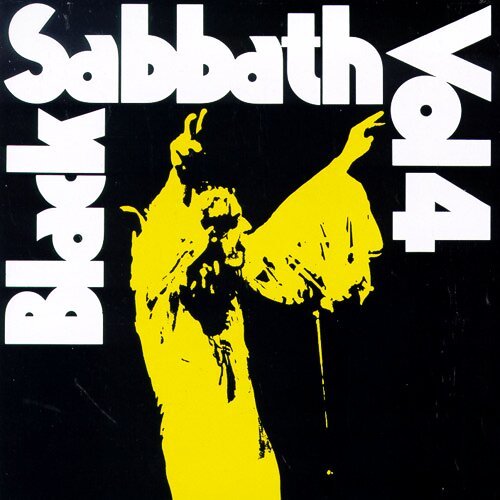Classic Album: Black Sabbath Vol. 4 | Eoghan Lyng

It's been forty years since the release of perhaps the defining moment in the defining metal band's discography. Long the subject of debate among Black Sabbath fans, Volume Four has lasted the test of time, and is an important milestone in the genre's evolution. Eoghan Lyng take’s a look at why it matters.
For an album that is forty years old, Vol.4 has a resonance and quality to it that still makes it a brilliant album to listen to. Although it may not have the killer dynamics of Paranoid or the lush production of Sabbath Bloody Sabbath, Vol.4 is still one of the best records Black Sabbath ever made. Not only does it contain some of the best guitar riffs that Tony Iommi ever came up with (and considering his standard of guitar playing, this is high praise indeed), but it also showed the band expanding their musical horizons outside of heavy metal for the first time.From the opening to closing track, it was obvious that the band had matured in a lyrical sense in comparison to their first three albums. Their eponymous debut dealt with lyrics that revolved around satanic themes, and the two succeeding albums had not deviated too far from that topic. This album, however, showed that Geezer Butler (who not only played bass guitar, but also wrote the lion's share of the lyrics at the request of frontman Ozzy Osbourne) was capable of writing about topics that the ordinary listener could relate to. Superfast and Snowblind both dealt with the band`s addictive habits while the lyrics of Changes dealt with the imminent break up of drummer Bill Ward's marriage (Osbourne himself would rate Changes as one of his favourite songs and would subsequently re-record a far inferior version with his daughter Kelly in 2003).Musically, the album also proved that the band had improved in both a musical and production sense. Largely produced by bandleader Iommi (although Sabbath's manager Martin Sharp also received a production credit, a credit in which Iommi bemoaned in his autobiography), this was the first album in which the four members experimented with different instruments and effects that lay outside of the realm of electric guitars, bass and drums. The melody of Changes was played on illustrious piano, that proved that the band were capable of playing beautiful music. Laguna Sunrise features Iommi playing a nylon string guitar in a style that was almost certainly intended to be reminiscent of baroque music. FX is an absolute oddity of a track. Iommi and Osbourne both recounted about undressing themselves and attacking Iommi`s guitar with sticks. This unusual method must have impressed them sufficiently as they felt it was worthy of a place on the album.There are those who will consider this to be an outrageous hyperbole but personally I feel that this track should be mentioned in the same breath as John Cage's 3'44” and Serge Gainsbourg's Je t'Aime... Moi Non Plus in terms of studio experimentation and for eclectic composition technique. It is an awful shame that it is far more frequent of critics to lambast Iommi for what they consider to be the indignity of creating the heavy metal riff, instead of praising him for his brilliance as a producer.
Since its release in 1972, it has proven to be a very popular album. Avant-Garde songwriter Frank Zappa frequently praised the album and claimed that Snowblind was perhaps the finest song ever written to deal with cocaine addiction. It was, however, it`s inclusion within 1001 ALBUMS YOU MUST HEAR BEFORE YOU DIE that was perhaps the greatest accolade that it could have received, if you consider that it was placed alongside the works of many of Black Sabbath's influences, such as Led Zeppelin, Cream and The Jimi Hendrix Experience. As Sabbath reunite to record their first album with Osbourne in over thirty years, we can only hope that they can recreate the magic that they produced on this album.

